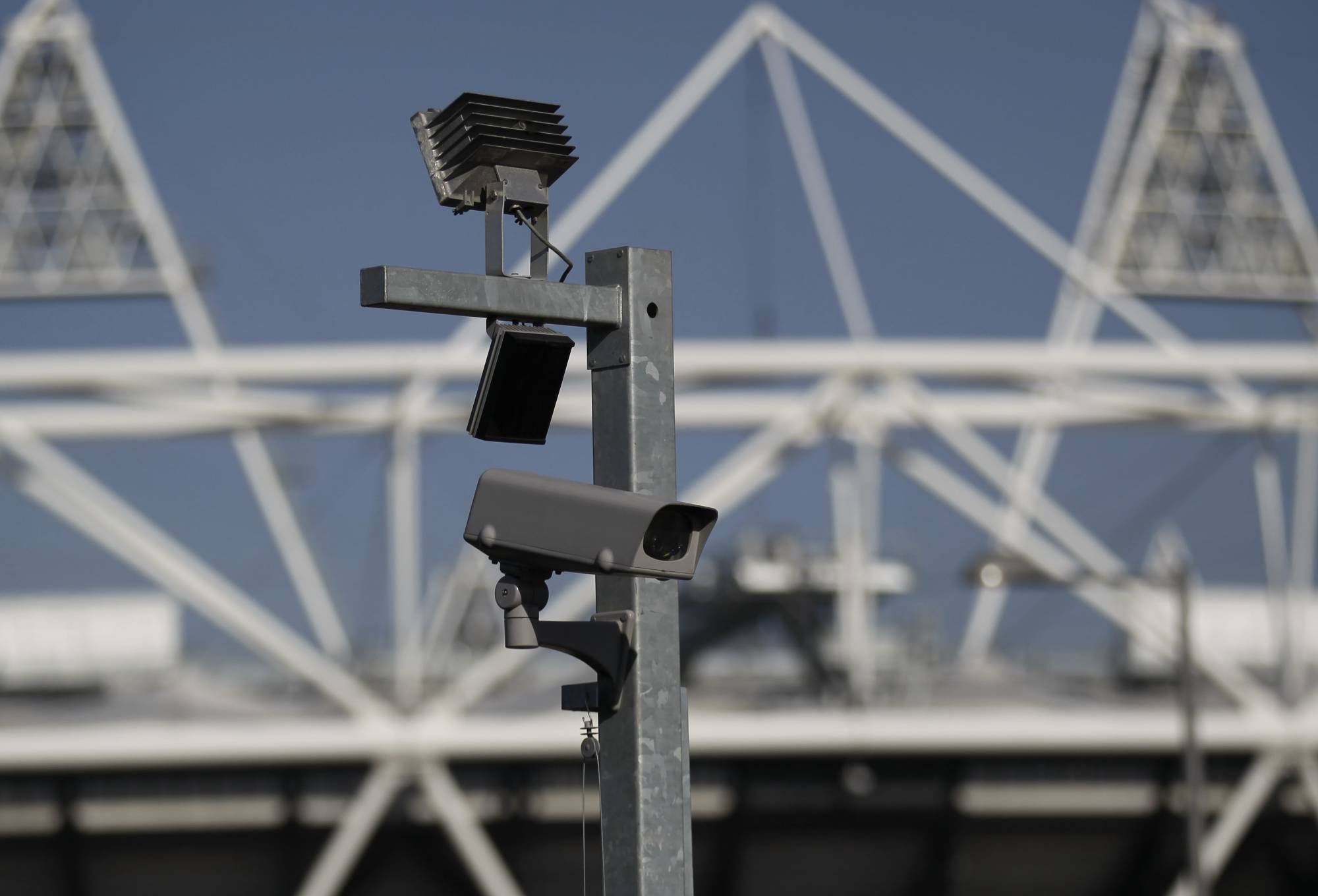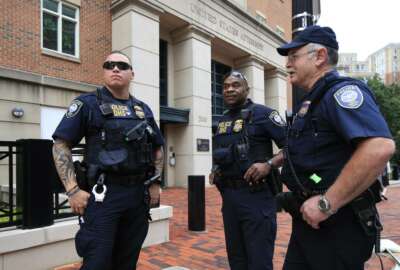Officers guarding fed facilities to get retention incentive amid staffing shortages
The Federal Protective Service is still facing steep staff shortages amid a rise in threats to government employees and facilities.
The agency in charge of protecting thousands of federal facilities across the country is still facing steep staff shortages amid a rise in threats against government employees and buildings.
But the Federal Protective Service hopes retention incentives will help keep employees around long enough to bring in new recruits and respond to an uptick in activity ahead of next year’s presidential election.
Kris Cline, director of the FPS, said his agency continues to face recruiting and retention challenges, with approximately 25% of FPS positions currently vacant.
“We are short staffed right now,” Cline said today during a Senate Homeland Security and Governmental Affairs Committee hearing. “But we’re still getting our mission done. We’re using overtime dollars right now, because we have officers staying later to protect our facilities. And it remains a challenge for us.”
The staffing shortfalls comes amid a persistent increase in threats to federal employees and facilities. In his written testimony, Cline said FPS has observed over the last year “an increase of incidents at federal properties involving arson, burglary, robbery, larceny, motor vehicle thefts, assault on government employees, and threats to harm government employees.”
And Cline said FPS will continue to be busy over the next 14 months as it’s involved in securing high-profile federal trials, the conventions for both major political parties, the presidential election itself and then the corresponding inauguration.
FPS loses about 14% of its law enforcement officers every year, Cline said, as they retire or seek opportunities at other federal agencies with better benefits.
Beginning in the next pay period, Cline said FPS will begin offering a retention incentive to uniformed officers at the GS-12 pay scale or below. He said the retention incentive will last for at least “a couple years.”
“We think that’s going to help us keep what we have on board while we fill the other classes and hire those other people,” Cline said.
The Department of Homeland Security did not immediately respond to a question about how much the retention incentive is.
The agency’s longer term goal is to bring in more young recruits, Cline said, but first FPS has to get them trained. Cline said the FPS worked with the Federal Law Enforcement Training Center to fill more classes with the service’s job candidates over the next year.
“Right now it is a challenge to fill the seats,” Cline said. “We are working kind of backwards. So we’re filling the first classes first, and then we’re working towards the other classes. We’re reaching out to our candidates who have applied for our positions to check on, are you available to go to school on this date or this date or this date?”
FPS loses about 5% of its recruits during FLETC training, Cline said. About 80% of candidates make it through training and last at least one year at FPS, he added.
The service has also focused on recruiting veterans through a special hiring authority. But many of those individuals are now around 40-years-old, Cline said, and the service is increasingly targeting younger recruits.
“We need a new focus on those young and vibrant recent college graduates that have a different perspective on how to do things than old people like me,” he said.
New EO seeks to shore up facility security oversight
The shortfall in staff to secure federal facilities also comes as many agencies continue to neglect many facility security countermeasures recommended by FPS in recent years.
The Government Accountability Office reports agencies did not implement most of the 32,000 countermeasures FPS recommended from fiscal 2017 through 2023. Agencies did not respond to more than half of those FPS recommendations, while implementing fewer than 1,800 recommendations.
David Marroni, acting director in GAO’s physical infrastructure team, said agencies face cost challenges when determining whether to act on an FPS recommendation.
“Many of these facilities are multitenant agency facilities,”Marroni said during today’s hearing. “So each of those agencies needs to provide funding to implement some of these kind of measures. That can add some level of difficulty.”
Marroni said in other cases, the building’s age or space limitations could impede the adoption of recommended countermeasures.
However, with 55% of recommendations not even receiving a response, Marroni said agencies can sometimes struggle to make a decision within the 45 days mandated by FPS.
“Also, reluctance sometimes to accept risk of not implementing recommendations . . . they don’t want to formally note that,” Marroni continued. “And then at times, communication issues among the committees. This is a collateral duty for the officials on these committees, and sometimes they do not have as much expertise. And so responding to the recommendations cannot be as high of a priority as it should be.”
President Joe Biden in an executive order signed Monday directed reforms to the Interagency Security Committee, including a requirement for agencies to designate a senior official responsible for complying with the executive order and supporting Facility Security Committees.
Furthermore, Homeland Security and Governmental Affairs Committee Chairman Gary Peters (D-Mich.) said he’s also working on legislation that would require agencies to respond to the FPS’s security recommendations within 90 days.
“We have heard from agencies, ‘I need more time, this is very complex, I have to coordinate with the other agencies located in a multitenant facility,’” Cline told Peters. “A 90-day requirement coming through legislation would definitely strengthen the agency’s need to reply to those recommendations.”
Copyright © 2025 Federal News Network. All rights reserved. This website is not intended for users located within the European Economic Area.
Follow @jdoubledayWFED






